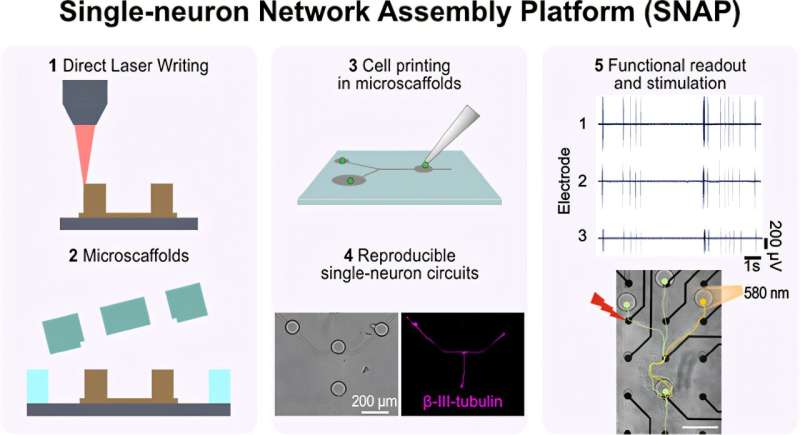Prof. Dr. Volker Busskamp, biotechnologist and research group leader at the UKB Eye Clinic, member of the ImmunoSensation² Cluster of Excellence and the Transdisciplinary Research Area (TRA) “Life & Health” at the University of Bonn, and his team have developed a novel technology that allows human neural networks to be constructed in a targeted and reproducible manner for the first time.
The method, called Single-Neuron Network Assembly Platform (SNAP), makes it possible to position nerve cells with single-cell precision and examine their electrical signals. This opens up a completely new approach to researching fundamental processes in the brain—and potentially also diseases such as epilepsy or cardiac arrhythmia.
Targeted neural circuits instead of random networks
Until now, in vitro models of the brain have often been based on randomly formed cell connections, which severely limits their reproducibility. The SNAP method, on the other hand, combines 3D-printed microfluidic channels with state-of-the-art laser and soft lithography technology.

